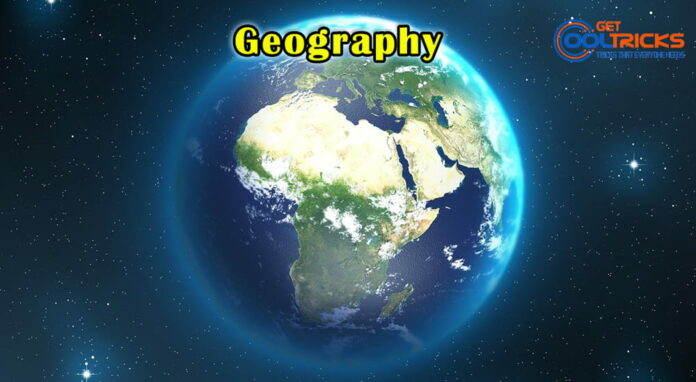Rock is naturally formed by the addition of minerals or inorganic salts. Humans initially received tools for hunting and protection from the rocks. They used the rocks as a necessary for the building construction of the habitats and the necessary material for making monuments. The scientific study of rocks is called petrology, which is an essential component of geology.
Types of Rocks
The rocks are classified based on minerals, chemical composition, texture , and formation.The rocks are usually divided into three major sections. They are
- Igneous Rock
- Sedimentary Rock
- Metamorphic Rock
1. Igneous rock
- The word ‘Igneous’ is derived from the Latin word meaning “fire”.Igneous rock is formed through the cooling and solidification of magma or lava.
- This magma may be derived from partial melts of pre-existing rocks in either a planet’s mantle or crust.
- Typically the melting of rocks is caused by one or more of three processes an increase in temperature, a decrease in pressure, or a change in composition.
- 64.7% of the rocks on the Earth’s surface are of Igneous Rocks.The Igneous rock were the first to appear.
- The Igneous rock is formed as molten Magma.
- For example Igneous rock can be described as rocks, such as the Andesite,Basalt,Diorite,Gabbro,Granite.
Types of Igneous Rock
- Extrusive or Volcanic igneous rocks
- Intervention igneous rocks
Extrusive igneous rocks
The piston or oven is caused by the migration of the magma to the surface and is gradually evaporated into a gradual cooling
Intervention rock
The intervention is formed by the volcanic or fragmentation resulting from the magma that reaches the rock surface.Examples: Bumism or Basalt.
Types of Intervention rock
- Dyke
- Sill
- Laccolith
- Batholith
- Volcanic Pipe
2. Sedimentary Rock
- Sedimentary rocks are types of rock that are formed by the deposition and subsequent cementation of that material at the Earth’s surface and within bodies of water.
- Sedimentation is the collective name for processes that cause mineral or organic particles (detritus) to settle in place.
- The rocks formed by deposits cover 75-80% of the land area.
- Wind, temperature, water and ice are damaged by rocks. The dense rock particles are mixed in river waters.The river is made up of river banks in the banks of the lake and oceans.
High levels of carbonates sedimentary rocks are divided into four categories: They are
- Clusters
- Chemical precipitate
- Biogenic deposition rocks
- Other types (formed by volcanoes and conflicts)
Types of Sedimentary Rock
- sandrock
- shale
- Palkuttu rocks
- chunnampu rocks
- Coal
Classification based on compounds
- Silicate
- Carbonate
- Evaporation
- Carbon-fossilized
- Silica
- Iron nutrient
- Phosphate
3. Metamorphic (or) Transform rocks
- The Metamorphic rock is a type of rock. Metamorphic rocks are formed by subjecting any rock type sedimentary rock, igneous rock or another older metamorphic rock to different temperature and pressure conditions than those in which the original rock was formed.
- This process is called metamorphism meaning to “change in form”.The result is a profound change in physical properties and chemistry of the stone.
- The Metamorphic involves physical and chemical changes in temperature and high pressure over 150 degrees Celsius.
- Marble,Slate,Schist,Gneiss,Quartzite these are the example of the Metamorphic rocks.
Rock cycle
- The rock cycle is a basic concept in geology that describes the time-consuming transitions through geologic time among the three main rock types sedimentary, metamorphic and igneous. As the adjacent diagram illustrates each of the types of rocks is altered or destroyed when it is forced out of its equilibrium conditions.
- An igneous rock such as basalt may break down and dissolve when exposed to the atmosphere, or melt as it is subducted under a continent.Due to the driving forces of the rock cycle plate tectonics and the water cycle rocks do not remain in equilibrium and are forced to change as they encounter new environments.
Coral Reefs
- Coral reefs are diverse underwater ecosystems held together by calcium carbonate structures secreted by corals.Coral reefs are built by colonies of tiny animals found in marine water that contain few nutrients.
- These can usually grow from 1 mm to 100 cm.
- Most coral reefs are built from stony corals which in turn consist of polyps that cluster in groups.The polyps belong to a group of animals known as Cnidaria which also includes sea anemones and jellyfish.
- Unlike sea anemones corals secrete hard carbonate exoskeletons which support and protect the coral polyps.Most reefs grow best in warm, shallow, clear, sunny and agitated water.
Types of coral Reefs
- Fringing corals reef
- Barrier corals reef
- Platform or circle corals reef
- Atoll
Rare Shapes Rocks
- Todd Rock(Frog rock) – Mount Abu, Rajasthan
- Tortoise Rock – Rayson, Madhya Pradesh
- Yana – Karnataka State
- Marble rocks – Jabalpur, Madhya Pradesh
- Gilbert Hill – Mumbai
- Phantom Rock – Wayanad, Kerala
- Volcanoes rock – Saint Mary Island, Karnataka
- Pillar rock- Kodaikanal,Tamil Nadu
- Mamallapuram Balance Rock


